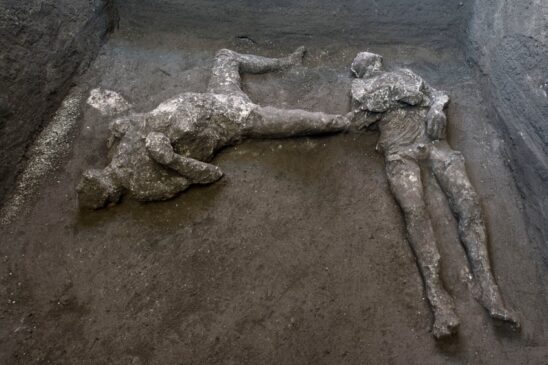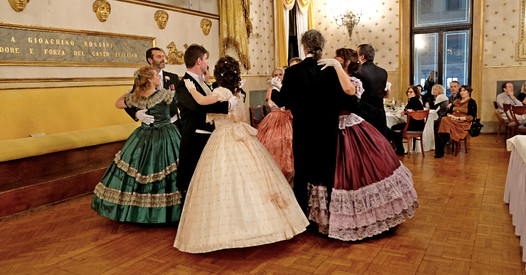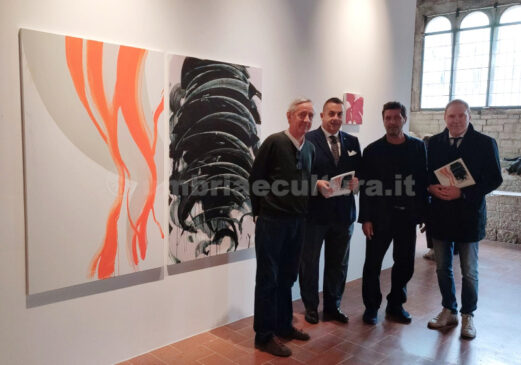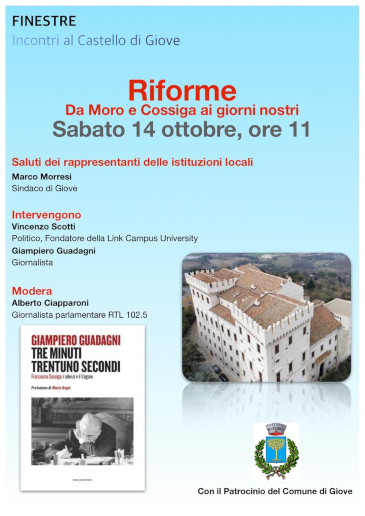During the current excavations at Civita Giuliana, around 700 metres northwest of Pompeii, in the area of the large suburban villa two skeletons of individuals caught in the fury of the eruption have been found.
The bodies were found in a side room of the cryptoporticus, in the form of a passageway below the villa which led to the upper floor.
Inside the room, initially voids were discovered in the layer of hardened ash, below which the skeletons were encountered. Once the bones had been analysed – by the physical anthropologist of the Park, who removed most of them – plaster was poured in, according to the famous plaster casting technique developed by Giuseppe Fiorelli, who first invented and experimented with it in 1867.
The plaster casts have yielded the shapes of the bodies of the two victims, in a supine position.
Both had died suddenly during the so-called second pyroclastic flow, which struck Pompeii and the surrounding area in the early hours of the 25th October, leading to the death of the survivors who were still present in the city and countryside. This second flow was preceded by a brief period of quiet, perhaps half an hour, during which the survivors both at Pompeii and probably at Civita left their dwellings in a vain attempt to save themselves.
The flow that struck was however very fast and very violent, bringing down the first floors of the houses and surprising the victims as they attempted to escape across a few centimetres of ash, leading to their deaths. In this case it is probable that the pyroclastic flow flooded the room through several openings, entombing them in the ash.
Studies revealed that the first victim, with his head tilted, and his teeth and skull visible, was a young man, between 18 and 23/25 years of age, who was approximately 156cm tall. The presence of a series of vertebral compressions, unusual in a young man of his age, would suggest that he had carried out hard manual work. He could therefore have been a slave. He wore a short tunic, of which the imprint of the drapery is clearly visible on the lower part of the belly, with thick rich folds and traces of heavy fabric, of a consistency which suggests that it was made of wool fibres. Several fragments of white plaster were found next to the face, and fragments of the wall preparation layer of the room were found alongside the legs.
The second victim was found in an attitude that was completely different to the first, but which is similar to that found in other plaster casts at Pompeii: the head has fallen backwards into the cinerite, at a lower level than the body, and the plaster cast has outlined the chin, lips and nose, while the skull is preserved. The arms are folded with the hands on the chest, similar to a position seen in other casts, whilst the legs are spread apart with the knees bent.
The robust stature of the victim, particularly in the thorax area, suggests once again that this is a man, though older than the other victim, aged between 30 and 40 years and approximately 162cm tall.
This victim wore more intricate clothing compared to the other, as he wore a tunic and mantle. Beneath the victim’s neck and close to his sternum, where the fabric formed clear and heavy folds, imprints of the fabric are preserved that are clearly visible and indicate a woollen mantle which stopped at the left shoulder. At the position of the upper left arm there is also an imprint of a different fabric pertaining to a tunic, which would seem to have extended to the pelvic area. Fragments of white plaster were found close to the face of the victim, which had probably collapsed from the upper floor.




